CLASSES >> Classes
Classes
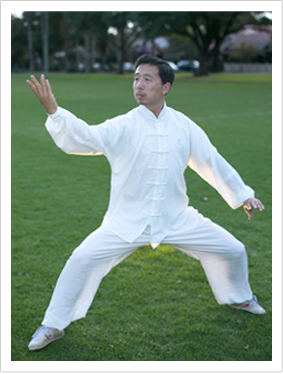 Chen Style Tai Chi Xin Jia (New Frame) is attributed to Chen Fake. The Xin Jia was
mainly adapted from classic old frame. Comparing to 'old' frame, the new frame
focuses on the coordinated opening and closing of back and chest along with a type
of rippling wave (folding) running vertically up and down the dantian/waist area,
connected to twisting of the waist/torso. The stances in Xin Jia tend to be more
compact in the goal of better mobility for fighting applications, while they still
remain quite low. Also the new frame tends to emphasise on manipulation, seizing
and grappling as well as on spiral winding for both long and shorter range striking.
Chen Style Tai Chi Xin Jia (New Frame) is attributed to Chen Fake. The Xin Jia was
mainly adapted from classic old frame. Comparing to 'old' frame, the new frame
focuses on the coordinated opening and closing of back and chest along with a type
of rippling wave (folding) running vertically up and down the dantian/waist area,
connected to twisting of the waist/torso. The stances in Xin Jia tend to be more
compact in the goal of better mobility for fighting applications, while they still
remain quite low. Also the new frame tends to emphasise on manipulation, seizing
and grappling as well as on spiral winding for both long and shorter range striking.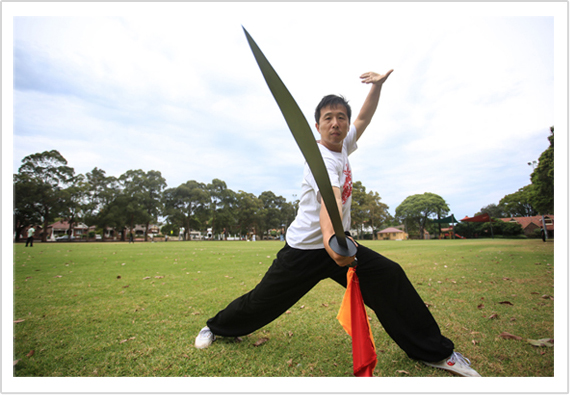
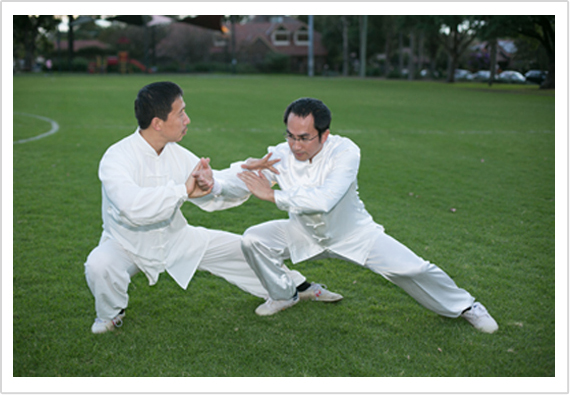
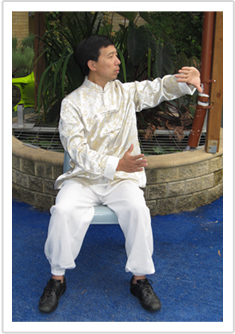 Developed by Master Huang, Chair Tai Chi is a gentle exercise program based on the
principals of Chen style Tai Chi but designed for the elderly in retirement communities,
hostels and nursing homes. It is to help people receive the benefits of the traditional
Tai Chi in the comfort and safety of their chair. The program allows people who
cannot stand or lack confidence with their balance, such as those who use a walker,
wheelchair, or have a movement disorder to participate and benefit from exercise.
Some of health benefits of Chair Tai Chi are: improvement of balance, flexibility,
range of motion, strength, and energy, assistance in pain relief, stress reduction,
and peace of mind. It also helps improve eye and hands coordination, burn fats and
calories, lower cholesterol, assist in managing blood pressure level and alleviating
the pain from osteoporosis, osteoarthritis, arthritis, bursitis, tendonitis, fibro/polymyalgia
and neuropathy.
Developed by Master Huang, Chair Tai Chi is a gentle exercise program based on the
principals of Chen style Tai Chi but designed for the elderly in retirement communities,
hostels and nursing homes. It is to help people receive the benefits of the traditional
Tai Chi in the comfort and safety of their chair. The program allows people who
cannot stand or lack confidence with their balance, such as those who use a walker,
wheelchair, or have a movement disorder to participate and benefit from exercise.
Some of health benefits of Chair Tai Chi are: improvement of balance, flexibility,
range of motion, strength, and energy, assistance in pain relief, stress reduction,
and peace of mind. It also helps improve eye and hands coordination, burn fats and
calories, lower cholesterol, assist in managing blood pressure level and alleviating
the pain from osteoporosis, osteoarthritis, arthritis, bursitis, tendonitis, fibro/polymyalgia
and neuropathy.
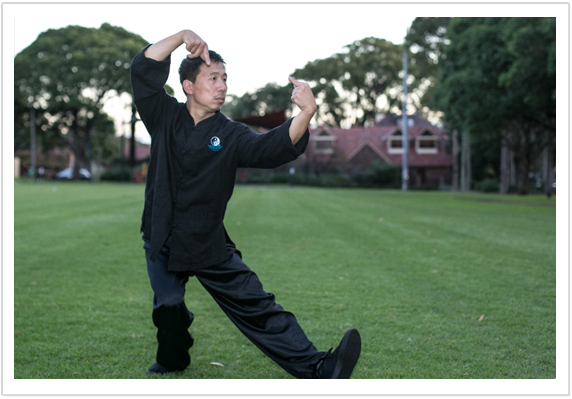
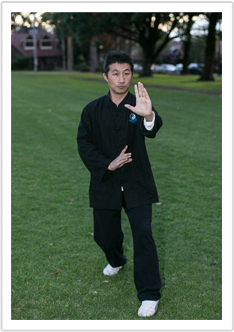 Xing Yi quan is one of the major "internal" styles of Chinese martial arts, and
is characterized by aggressive, seemingly linear movements and explosive power.
There is no single organizational body governing the teaching of the art, and several
variant styles exist.
Xing Yi quan is one of the major "internal" styles of Chinese martial arts, and
is characterized by aggressive, seemingly linear movements and explosive power.
There is no single organizational body governing the teaching of the art, and several
variant styles exist.